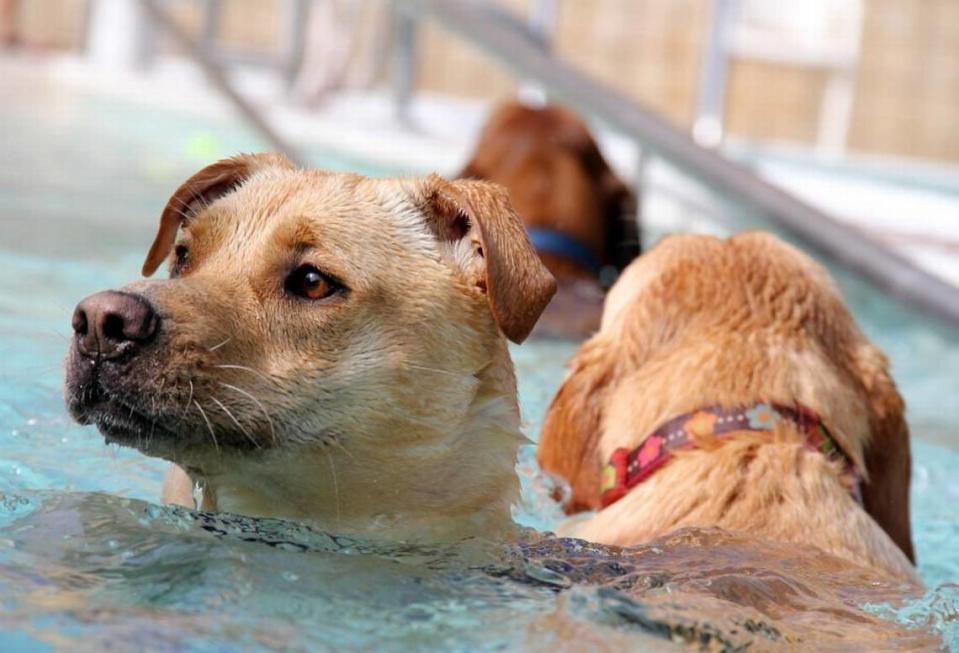Is it too hot to walk my dog? How to keep your pets safe in the heat.
The N&O Summer Desk is a pop-up initiative to help navigate the season. Whether you’re heading to the beach, mountains or backyard, The Summer Desk is here to guide you. Share your summer pleasures and story ideas with us at summerdesk@newsobserver.com
How to Use this News:
What should I know? If the pavement is too hot for your bare feet it’s probably too hot for your dog.
What should I share with family and friends? Don’t shave your shaggy dog. Its fur protects them from overheating and sunburns.

Temperatures may reach the 100s this week in the Triangle with just brief moments of reprieve.
The News & Observer spoke with Mariea Ross-Estrada, an assistant clinical professor of small animal primary care at N.C. State University’s College of Veterinary Medicine, to learn how to keep pets safe during the summer months.
Ross-Estrada guides veterinary students seeing cats and dogs and says they are already seeing the effects of the extreme heat, including animals left in vehicles, dogs with burned paw pads and pets with signs of heat stroke.
When should I walk my dog?
It’s best to avoid walking your pets during the middle of the day during the summer months, Ross-Estrada said.
The best time to walk your dog in the summer is before 9 a.m. and just before sunset. It may still be hot, but your pet will avoid the sun’s direct rays.
Animals that need to go out midday should be limited to five or 10 minutes, and stick to shady spots.
Does my dog need protective booties?
If it is uncomfortable for you to walk on the ground barefoot, it is likely uncomfortable for your pets, Ross-Estrada said.
“They do have a little less sensitivity in their paw pads than we do, but still, it’s also going to be potentially dangerous for them to walk around for long amounts of time,” she said.
“So above 80 degrees, we’re going to try to limit that. And definitely if it’s 90 or 100 degrees, yeah, forget about it.”
Stick to the grass when walking your dog, and avoid asphalt or concrete. Just keep an eye out for snakes.
And now isn’t the time to cave to those Instagram ads for protective dog booties.
Dogs and cats don’t sweat to cool down like humans and instead mostly regulate their heat with panting and through their paw pads and nose.
“If a dog’s not used to wearing booties, now’s not the time to start,” Ross-Estrada said. “It’s hot outside and then to try to put booties on their feet, I wouldn’t necessarily do that for a dog to protect them from the hot concrete. I would limit the exposure to the hot concrete, instead.”
How to tell if your dog has heat stroke, and how to save them
Is my pet getting enough water?
Make sure your animals have access to fresh, clean water. Water can evaporate more quickly in the heat, so refilling the water bowl is important.
Worried about their dog’s water intake? Try the following:
Ice cubes
Diluted chicken broth cubes
High-volume foods with lots of liquid like watermelon and cucumbers
And clean your pet’s water bowls at least once a week.
Which pets are more susceptible to the heat?
Brachycephalic dogs — think pugs, boxers, bulldogs and other dogs with smushed faces — have a harder time in the heat. The same goes for cats like Himalayans, Persians, British Shorthairs and Tonkineses.
If your cat has medium or long hair, it shouldn’t be outside unless it has a dedicated shady spot like a cathouse, Ross-Estrada said.
“It’s so they can get out of that direct heat and not be sitting under a car or someplace else that might be dangerous for them to beat the heat,” she said.
It’s also the law. Pets are required to have shade and plenty of fresh, clean water if they are outside.
Should I shave my animals?
Some people think they need to shave a shaggy dog to cool them off. That’s not the case.
A dog’s coat acts as an insulator and removing its fur can make a dog more susceptible to heat stroke, according to the American Kennel Club. It can also increase their risk of getting sunburn.
You can consider a summer trim to remove some excess hair, but you should consult with a groomer.
Does my dog need sunscreen?
In most cases, no.
There is a slight concern for dogs with thin coats or white hair, but it’s much better to limit their time in direct sunlight, Ross-Estrada said.

Pool, lake and beach safety for pets
Pools: Pets near pools should be continuously supervised and pools should be gated and secured when not in use. Pets should be monitored so they don’t drink pool water and get sick.
Lakes: Not all animals are strong swimmers and pets should be monitored carefully while they swim. Pets that aren’t strong swimmers should wear an animal life jacket.
Oceans: Pet owners shouldn’t let their dogs or cats drink ocean water. The salt water is toxic and can make animals sick.
In the Spotlight designates ongoing topics of high interest that are driven by The News & Observer’s focus on accountability reporting.


